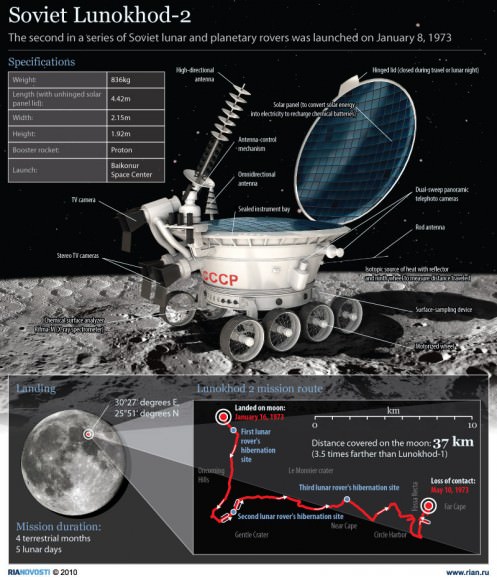Now more than 9 years and counting into her planned mere 90 day mission to Mars, NASA’s legendary Opportunity rover has smashed past another space milestone and established a new distance driving record for an American vehicle on another world this week.
On Thursday, May 16, the long-lived Opportunity drove another 263 feet (80 meters) on Mars – bringing her total odometry since landing on 24 January 2004 to 22.220 miles (35.760 kilometers) – and broke through the 40 year old driving record set back in December 1972 by Apollo 17 astronauts Eugene Cernan and Harrison Schmitt.
See below our complete map of the 9 Year Journey of Opportunity on Mars.
Cernan and Schmitt visited Earth’s moon on America’s final lunar landing mission and drove their mission’s Lunar Roving Vehicle (LRV-3) 22.210 miles (35.744 kilometers) over the course of three days on the moon’s surface at Taurus-Littrow.

Cernan was ecstatic at the prospect of the Apollo 17 record finally being surpassed.
“The record we established with a roving vehicle was made to be broken, and I’m excited and proud to be able to pass the torch to Opportunity, ” said Cernan to team member Jim Rice of NASA Goddard Space Flight Center, Greenbelt, Md, in a NASA statement.
And Opportunity still has plenty of juice left!
So, although there are no guarantees, one can reasonably expect the phenomenal Opportunity robot to easily eclipse the ‘Solar System World Record’ for driving distance on another world that is currently held by the Soviet Union’s remote-controlled Lunokhod 2 rover. See detailed graphic below.
In 1973, Lunokhod 2 traveled 23 miles (37 kilometers) on the surface of Earth’s nearest neighbor.
Why could Opportunity continue farther into record setting territory ?
Because Opportunity’s handlers back on Earth have dispatched the Martian robot on an epic trek to continue blazing a path forward around the eroded rim of the huge crater named ‘Endeavour’ – where she has been conducting ground breaking science since arriving at the “Cape York” rim segment in mid 2011.

Opportunity has just now set sail for her next crater rim destination named “Solander Point”, an area about 1.4 miles (2.2 kilometers) away – due south from “Cape York.”
Endeavour Crater is 14 miles (22 km) wide, featuring terrain with older rocks than previously inspected and unlike anything studied before. It’s a place no one ever dared dream of reaching prior to Opportunity’s launch in the summer of 2003 and landing on the Meridiani Planum region in 2004.
Opportunity will blast through the world record milestone held by the Lunokhod 2 rover somewhere along the path to “Solander Point.”
Thereafter Opportunity will rack up ever more miles as the rover continues driving further south to a spot called “Cape Tribulation”, that is believed to hold caches of clay minerals that formed eons ego when liquid water flowed across this region of the Red Planet.
It’s a miracle that Opportunity has lasted so far beyond her design lifetime – 37 times longer than the 3 month “warranty.”
“Regarding achieving nine years, I never thought we’d achieve nine months!” Principal Investigator Prof. Steve Squyres of Cornell University told me recently on the occasion of the rovers 9th anniversary on Mars in January 2013.
“Our next destination will be Solander Point,” said Squyres.
Opportunity was joined on Mars by her younger sister Curiosity, currently exploring the crater floor inside Gale Crater since landing on Aug. 6, 2012.
Curiosity is likewise embarked on a epic trek – towards 3 mile high (5.5 km) Mount Sharp some 6 miles away.
Both rovers Opportunity & Curiosity have discovered phyllosilicates, hydrated calcium sulfate mineral veins and vast evidence for flowing liquid water on Mars. All this data enhances the prospects that Mars could have once supported microbial life forms.
The Quest for Life beyond Earth continues ably with NASA’s Martian sister rovers.
And don’t forget to “Send Your Name to Mars” aboard NASA’s MAVEN orbiter- details here. Deadline: July 1, 2013
…………….
Learn more about NASA missions, Opportunity, Curiosity and more at Ken’s upcoming lecture presentation:
June 12: “Send your Name to Mars” and “Antares Rocket Launch from Virginia”; Franklin Institute and Rittenhouse Astronomical Society, Philadelphia, PA, 8 PM.

Credit: NASA/JPL/Cornell/ASU/Marco Di Lorenzo/Ken Kremer



